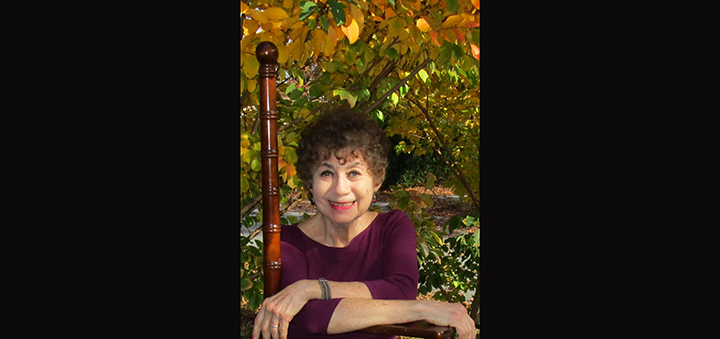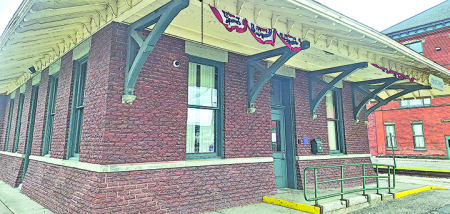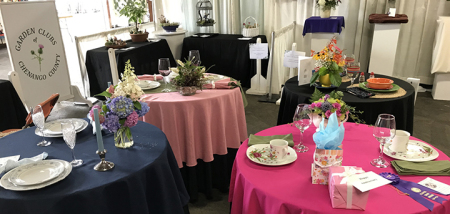Tilting At Windmills: Newspapers!
Published:
August 25th, 2023
By:
Shelly Reuben
 Shelly Reuben
Shelly Reuben
Indulge me, please, as I time-travel into my past, holding in my mind an image of someone whom you may or may not have met.
Her name is Brenda Starr.
I have just arrived at my parents’ home in a leafy suburb of Chicago. There is a huge oak tree in our front yard. Lilacs, lily of the valley, and peonies border the lawn. Five children (I am second-oldest) and two parents are inside.
It is Sunday.
We are all in the living room.
I don’t remember if my father had gone out for bagels and lox and picked up our newspapers on the way home, or if we got them delivered. But I can clearly see my parents sitting in their respective armchairs or either side of the sofa. The rest of us – me, my two sisters and two brothers – are sprawled on the sofa or lying on the carpet.
We are reading The Chicago Tribune and The Chicago Daily News. If we had been living in a suburb of NYC at the time, it would have been The New York Times and The New York Post.
Sundays may have meant “day of rest,” church, or Sunday school for some, but for my family, it meant newspapers, separated into sections, arbitrarily flung hither and yon, fought over as in “Aren’t you finished with the jokes yet?” and “Listen to this,” or disregarded as being of little interest since nobody read the sports pages, the society columns, or the obituaries.
Back in the blissful days when print journalism reigned supreme (thank you The Evening Sun for continuing to exist!), each city had four, five ... half-dozen or more newspapers competing with each other for readers. They were thick (on September 14, 1987, the Sunday New York Times weighed in at over 12 pounds), quarrelsome, competitive, opinionated, sensationalistic, pedantic, informative, exciting, inspiring, entertaining, and fun.
Sitting on our living room floor surrounded literally (and literarily) by a sea of paper, we had access to the entire world. There were sections on business and sections on food. Sections on international affairs, local news, editorials, gossip, crime, lifestyle, science, architecture, automotive, theater, movies, music, technology, the classifieds, and so much more.
Each newspaper had a glossy magazine section with articles covering everything from natural disasters to crime waves to high fashion to space travel. There was also a syndicated insert called USA Weekend featuring less ponderous news, human interest stories, crossword puzzles, word games, and compelling photographs.
For mothers committed to feeding their families, there were grocery stores supplements filled with coupons. Other favorites were the Book Review section, the TV guide, and the Sunday funnies.
Even though I didn’t watch a lot of television back then (school, part-time jobs, and compulsive reading of novels not assigned as homework intervened), I read every single movie synopsis of every single movie listed in the TV guide – usually no longer than one sentence – which is why, even today, I can describe the plots of hundreds of classic movies that I have never seen.
Although I did not know this at the time, the “me” who would one day become a writer was gobbling down those little plot summaries to learn (albeit unintentionally) not only what made a good story, but also that if it was really good, it could be described in just a few words.
And that brings me to my favorite part of our Sunday morning ritual: the funny pages.
Gosh. I loved them.
The artwork on ones I didn’t read, like “Terry and the Pirates,” “Steve Canyon,” “Prince Valiant,” and “Flash Gordon” was so intriguing that I never failed to peruse them before continuing on to my favorites: ”Superman,” “Dondi” (an adorable six-year old orphan adopted by his army buddies after World War II), “Archie” and “Batman.” I read and enjoyed – but could never quite follow the story lines of – “Li’l Abner,” “Dick Tracy,” and “Little Orphan Annie.” And I always took great delight in the big box at the bottom of the page featuring Rube Goldberg’s fanciful and bizarrely impractical machines.
My all-time favorite, though was a starry-eyed (Yes, her eyes sparkled even in newsprint!), red-haired adventuress named Brenda Starr. The Britannica describes her as “...a glamorous, beautifully dressed and coiffed reporter who traveled the world on assignment for her newspaper, The Flash ... Independent and feisty, she was pursued by many men, but her heart belonged to her elusive lover, Basil St. John, mystery man who raised black orchids, an ingredient in the only antidote for his unnamed illness.”
Brenda Starr went everywhere. She did everything. She scooped her colleagues. She was gorgeous. She was fearless. She (along with Lois Lane, Superman’s co-worker and award-winning journalist at The Daily Planet) was my role model and my hero.
Cool. Huh?
All of the bite-sized comics that appeared in daily editions of newspapers were printed in black and white. But on Sunday, their full-color adventures could take up to half a page, would seriously advance the plot, and always electrified the imagination.
The rest of the pages scattered helter-skelter across the carpet – filled with opinions, articles by brave reporters who risked all to cover wars, riots, hurricanes, and beauty pageants – informed, inspired, and amused.
But it was the daring heroines and dashing heroes in the funny pages, outsmarting rogues and vanquishing villains, who turned the Sundays of my childhood into a veritable literary feast.
So, thank you, Superman. Thank you, Steve Canyon. Thank you Dick Tracy.
Most of all, though, thank you red-headed, starry-eyed, smart, sassy and invincible ... Brenda Starr.
Copyright © Shelly Reuben, 2023. Shelly Reuben’s books have been nominated for Edgar, Prometheus, and Falcon awards. For more about her writing, visit www.shellyreuben.com
Author: Shelly Reuben - More From This Author
Comments










